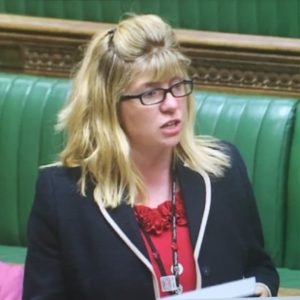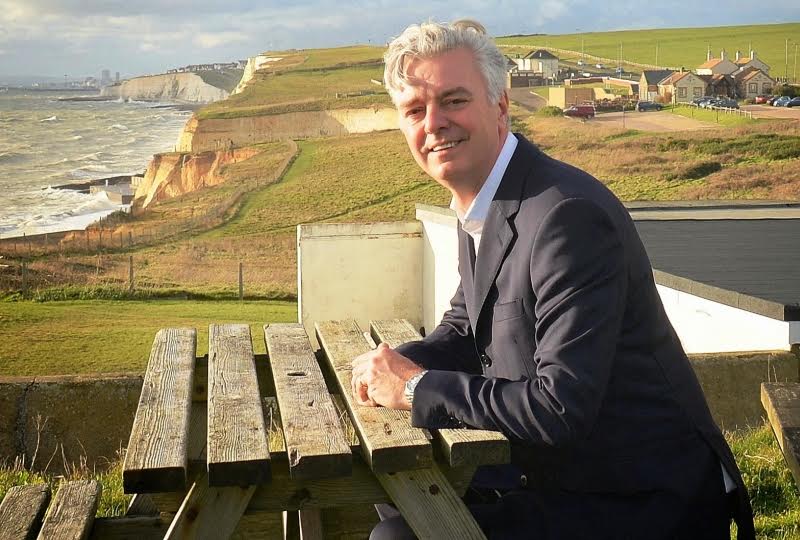The campaigners pushing for a second Brighton main line (BML2) are to meet the Transport Secretary at the end of the month.
Brighton Kemptown MP Simon Kirby wrote to Chris Grayling, the Transport Secretary, before Christmas, asking him to meet the BML2 consortium.
Mr Grayling has agreed to meet the campaigners on Monday week (30 January) to learn more about their proposal.
Mr Kirby said: “I am pleased that the Secretary of State has agreed to this meeting. I believe that this project could be a long-term solution to resolving some of the problems on the existing line.”
He said: “The project aims to provide improvements for passengers between Brighton and London as well as creating the conditions for regeneration, relieving housing pressure, increasing investment and creating employment from the south coast to east and south-east London and beyond.”

Lewes MP Maria Caulfield, who previously served as a Brighton councillor, has also pushed for the BML2 project.
She wrote in the Daily Telegraph last month: “Sussex is in desperate need of extra capacity and the best way to create that is a second main line from the south coast to London.
“A proposal for this already exists. Brighton Main Line 2 (BML2) would create a new route from the coast up to Canary Wharf which would take pressure off Brighton Main Line 1, making it easier to upgrade and maintain those creaking old tracks.
“This project could begin in as little as 18 months. A feasibility study is already on Mr Grayling’s desk and foreign investors are waiting to fund it.”
Another leading Conservative, Geoffrey Theobald, the opposition leader on Brighton and Hove City Council, has also been a vocal supporter of the scheme.
Councillor Theobald has flagged up the proposal at meetings of the Greater Brighton Economic Board.

But support for the project is not confined to the Conservative Party. The Green MP for Brighton Pavilion, Caroline Lucas, has also added her voice to the debate.
She asked the government to publish a study that ministers commissioned in 2015. Mr Grayling said that its release was long overdue.
And Lord Bassam of Brighton, the Labour chief whip in the House of Lords, has also offered support. As Steve Bassam, he was the leader of Brighton and Hove Council. Since becoming a peer, he has – like the city’s MPs – commuted enough to appreciate the need for more rail capacity.
The campaigners have worked up a three-phase proposal. They want to reinstate the old double-track main line rail links into both Tunbridge Wells (West) and Lewes via Oxted.
BML2 also includes plans for a mile-and-a-half-long Ashcombe tunnel under the South Downs to provide fast direct access to Brighton via Falmer.
There are also hopes of linking up with a route to the Stratford area which could have benefits for passengers and, crucially, ensure that the project becomes more viable for its financial backers.








Well good to see all the various politicians supporting BML2 – even though there is only a projection of when the project could start, rather than any idea of how long it would take to result in any improvement to the BML1 service, and no details of how much the project would cost, other than a statement that some undefined foreign investors are interested.
What about the cost of upgrading the whole BML2 route to overhead wires instead of third rail?
Will the SDNP approve the tunnel under the Downs? What about local planning permission for reopening the Uckfield to Lewes route?
What will the people of mid-Sussex feel about having all the noise of high-speed trains rocketing through their countryside?
Based upon the number of protests made for any road, housing, or fracking development in the area, what will the residents think about BML1? Or will, like much of HS1 and HS2, most of the track have to be buried in tunnels and cutting to stop noise pollution?
What expansion will be needed to stations in Brighton & Hove to cope with all the additional trains?
How bad are is BML1 track and would it be faster and cheaper to upgrade this to ERTMS to allow the same quantity of traffic into Brighton as their will be going through the same number of lines in central London provided for the new Thameslink trains?
After all, cross channel traffic only goes on a single track in each direction – why does Brighton require even more route redundancy than that?
Overall a very grandiose scheme (see http://www.bml2.co.uk/) which I can’t see helping the situation for Brighton commuters for many, many years to come on the “creaking old tracks” – how about, instead installing a chord at Arundel to allow Brighton trains to travel via the Arun line without the need to go via Littlehampton during problems or weekend engineering periods?